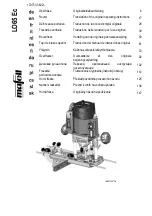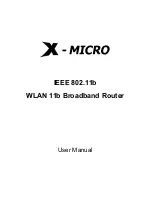
1-4
Cisco MWR 1941-DC-A Mobile Wireless Edge Router Hardware Installation Guide
OL-7872-04
Chapter 1 Product Overview
Introduction
Cisco GSM Abis Optimization over IP
The Cisco GSM Abis Optimization over IP technology improves T1/E1 bandwidth efficiency by 33% to
50%, corresponding to a GSM voice call capacity gain of 50-100% per T1/E1, depending on the nature
of the traffic on the Abis interface.
In a GSM RAN, the interface between the BTS and BSC is a 3GPP reference interface called the Abis
interface. The physical trunk connecting a BTS and BSC is typically a T1 or E1 circuit, and carries 24
(T1) or 32 (E1) separate 64 kbps DS0 channels. One or two of these DS0 channels is used to carry control
and signaling traffic, while the remainder is used to carry bearer traffic—voice and data from mobile
users. Each DS0 bearer channel carries up to four sub-multiplexed 16 kbps channels, termed sub-rate
DS0s. The voice and data bearer traffic is carried over the sub-rate DS0s in transcoder and rate adaptor
(TRAU) frames in accordance with 3GPP TS 08.60 v8.2.1, “In-band control of transcoders and rate adaptors
for Enhanced Full Rate (EFR) and full rate traffic channels.” There are several types of TRAU frames:
full-rate (FR) or enhanced full-rate (EFR) GSM vocoder frames; adaptive multi-rate (AMR) vocoder
frames; silent speech frames; and OAM frames. When a sub-rate DS0 is assigned to a call, TRAU frames
are generated in accordance with 3GPP TS 08.60 v8.2.1, “In-band control of transcoders and rate adaptors
for Enhanced Full Rate (EFR) and full rate traffic channels.” When a sub-rate DS0 is idle, that is, not
assigned to a call, a repeating idle pattern is transmitted in accordance with 3GPP TS 08.54 v8.0.1, “Base
Station Controller-Base Transceiver Station (BSC-BTS) interface; Layer 1 structure of physical circuits.”
The transcoder and rate adaptation control function that specifies the TRAU frames provides several
opportunities to optimize the Abis interface, and thus optimize the backhaul bandwidth efficiency. For
example, when Discontinuous Transmission (DTX) is employed over the air interface, the TRAU frames
that are transported on the Abis interface contain standardized redundant bit patterns, known as idle
(silent) speech frames (FR and EFR) or “no data” frames (AMR), whenever a voice user is silent
(typically 40-60% of the time). As another example, bearer channels that are not assigned to calls each
carry known idle bit patterns on the Abis interface as mentioned previously. Thus, even though no radio
transmissions are made during silent and idle periods, redundant information is nevertheless transported
across the backhaul network thereby unnecessarily consuming precious bandwidth.
Cisco Iub Optimization over IP
The Cisco Iub Optimization over IP technology for R4/R99 (ATM) UMTS RANs improves bandwidth
efficiency by as much as 15% to 40%, corresponding to a UMTS voice call capacity gain of 18% to 67%,
depending on the type of Iub header and ATM Adaptation Layer traffic sub-cell multiplexing
performance. For R5/R6 IP UMTS RANs, Cisco provides compression and low-overhead encryption.
Intelligent Cell Site IP Services
Cisco’s RAN-O solutions also open up the possibility to deliver new profit-enhancing services. This is
achieved through the rich set of IP networking features supported in Cisco IOS Software that are now
extended to the cell site (see
Figure 1-3 on page 1-5
).
Cell Site Points-of-Presence (POPs)
Since many cell sites are located in and around downtown areas, hotels, airports, and convention centers,
they make attractive sites for colocating public wireless WAN (PWLAN) access points and other
wireless data overlays. Many of these wireless data radios are IP-based. IP networking features, like
Mobile IP, VoIP, IP Multicast, VPN, and content caching, enable delivery of new revenue-generating
services over these radios. Cisco also provides a wide range of low-latency IP-based QoS and traffic
shaping models to allow flexible mixing of multiple traffic types across the same backhaul network.
















































